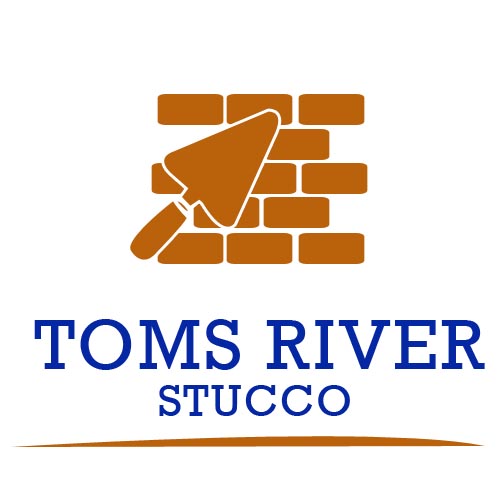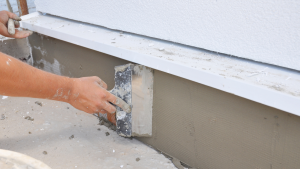Preventive maintenance is essential for preventing stucco problems. After you’ve applied it to your walls, it should be rather straightforward to keep in good condition, with minimal cleaning or fixing necessary.
Here are some useful stucco care ideas to help you avoid frequent problems and prolong the life of your siding.
Stucco Preventative Maintenance 101
Most modern stucco is made of a sand and cement mixture, which gives it an extremely long life – industry experts estimate that well-maintained stucco may last 50 to 80 years.
On the other hand, Stucco must be maintained to last its entire existence. Preventive maintenance is, therefore, essential.
Indoor vs. Outdoor
Indoor stucco requires much less upkeep than outdoor stucco since it is often in a temperature-controlled environment and does not have the sun beating down on it all day. It does, however, need a new coat of paint now and again.
Outdoor stucco, on the other hand, needs much more attention. For starters, it is continually exposed to sunlight, which may lead to substantial wear and tear. Aside from that, outdoor stucco is vulnerable to other elements such as wind, dirt, and dust. Much of the dirt and dust you’ll come across is thrown into the air by passing cars.
Fortunately, most exterior stucco requires a little cleaning. But it doesn’t mean you won’t have to undertake minor repairs now and again.
Make a habit of inspecting your stucco once a week to understand better when it needs to be cleaned. If it’s seen better days, pamper it in one of the methods below.
Stucco Preventative Maintenance: Cleaning Stucco
You may clean your stucco in various ways, including regular, advanced, and outdoor cleaning.
Regular Cleaning
Stucco absorbs dirt both inside and out because it is porous. Fortunately, as long as your interiors are clean and free of dust and filth, you shouldn’t need much more than water and elbow grease to keep your stucco in good shape.
You only need a soft-bristled nylon brush and some warm water to clean your interior stucco. You don’t want to saturate the brush; moisten it. Gently scrape the surface with water. Using a microfiber towel, wipe away any remaining residue Towel when completed.
Advanced Cleaning
Stucco preventative maintenance becomes more difficult if persistent stains must be removed.
Trisodium phosphate (TSP), a powerful chemical cleaning accessible at most hardware stores, is often used by industry specialists. Using TSP effectively requires some forethought.
Using TSP Safely
When dealing with TSP, it’s critical to take the required safeguards. If you don’t, you could face heavy punishments Harm, such as chemical burns.
Start by making sure your workplace is adequately ventilated. Open all the surrounding doors and windows, and turn on the room’s fan. Wear personal protective equipment such as a long-sleeved shirt, gloves, and safety glasses next.
When ready to start, dilute the chemical with water 15-to-1. Use a nylon brush to apply it to the stucco and let it dry completely. This usually takes a few hours.
Outdoor Cleaning
Outside stucco upkeep may be challenging. Outdoor stucco is often dirtier because of its frequent exposure to the elements. Consistency is the key to keeping your exterior stucco clean.
A power washer or an outdoor hose with a sprayer nozzle will be required to clean the external stucco. Using your favorite device, spray the stucco. After the stucco has been wet, please switch to a more vigorous spray setting and blast it from top to bottom. Spraying downward prevents dirt from accumulating at the wall’s base.
Once you’ve done spraying, look for any leftover dirt. Remove it manually with a brush if you find any. To prevent harming the stucco, scrub softly.
If you still have blemishes after this step, apply your TSP solution directly to the dirty or discolored area using a sprayer. Allow enough drying time before rewashing the stucco.
What Happens if Stucco Isn’t Repaired?
Stucco is a naturally hard substance. While this property is responsible for many benefits, it may also be hazardous if the surface is not well-maintained.
Stucco may develop chips, cracks, and holes over time, giving great hiding places for mildew, vermin, and risks. If a small issue is not handled quickly, it might soon become serious.
Even if you don’t see any visible defects, your stucco may be ruined from the inside. This kind of injury is much more ambiguous and difficult to identify. Many homeowners notice the warning signs when it is too late.
Mold may be growing under the stucco if you see discoloration beneath your windows. Take notice of the scents as well. If you notice a strong odor of wood rot, it might indicate that your stucco is crumbling.
Stucco Issues in Toms River NJ? Contact the Experts at Toms River Stucco!
Remember that preventative maintenance is vital for extending the life of your stucco. All it takes is a little attention here and there to keep your siding clean, durable, and beautiful.
If you have problems with your stucco, you must act soon to prevent more damage. That’s where Toms River Stucco comes in. We install stucco correctly, guaranteeing that your surfaces will continue to dazzle for a long time.
Don’t disregard your stucco issues. Contact Toms River Stucco right now and let us know how we can help you.




